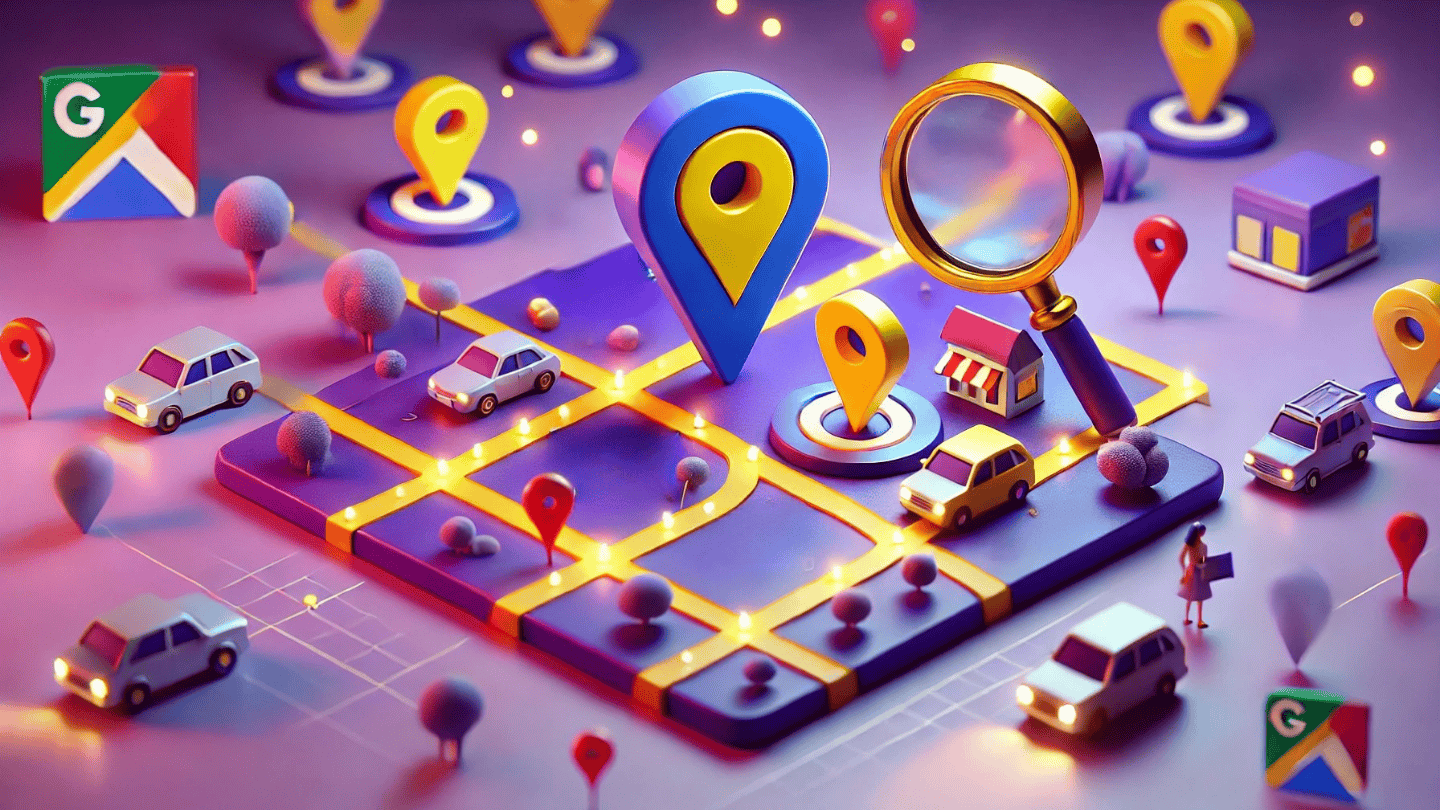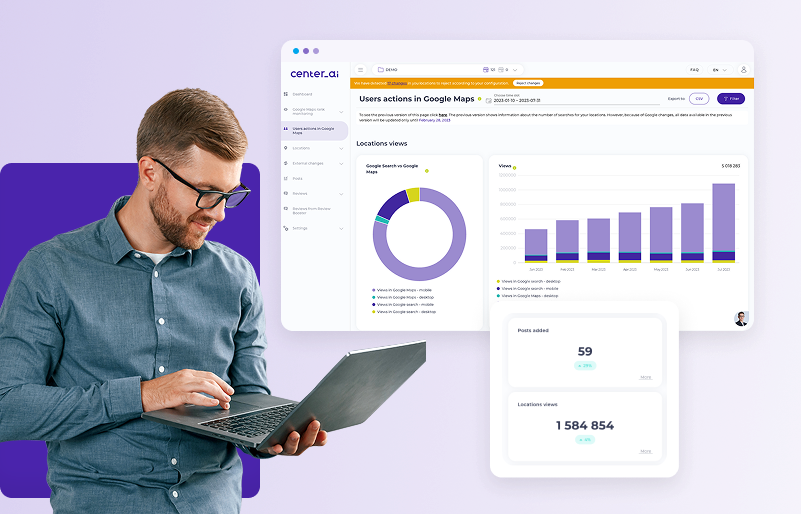9 Proven Drive-To-Store Marketing Strategies to Boost Foot Traffic 🏬

Weronika
October 7, 2024
|
Increasing foot traffic to a brick-and-mortar store can be challenging, especially as online competition strengthens.
However, physical stores have certain advantages, such as direct contact with products, instant purchasing, and a unique shopping experience.
In this article, we present seven proven strategies that will help you attract customers to your physical stores and make them more appealing. You’ll learn to optimize Google Business Profiles, leverage local marketing, manage your online reputation, and more.
These strategies are supported by tools that facilitate their implementation and allow real-time monitoring of their effects.
Ready for a fresh approach to driving more foot traffic to your stores? Let’s get started!
Why Invest in Drive-to-Store Strategies?
Despite the rise in online shopping, physical stores still play a crucial role in building customer relationships. There are several reasons to focus on drive-to-store strategies to fully capitalize on the potential of physical stores.
Direct contact with the product and instant purchase is something online shopping cannot fully replace. The ability to see, touch, and even test a product before buying is especially important for more complex items like electronics or clothing, where customers want to ensure quality and fit.
The in-store shopping experience extends beyond the transaction itself. It’s about the atmosphere, interactions with staff, and the convenience of navigating the store. Modern consumers increasingly expect personalized service that builds an emotional connection with the brand. Studies show that up to 70% of customers say that positive in-store experiences increase their loyalty to the brand.
Benefits of Implementing Drive-to-Store Strategies
- Increase Foot Traffic: Effective drive-to-store strategies attract more customers to your stores, directly translating into higher sales. Customers who visit the store often make impulse purchases, increasing the value of their shopping basket. Research indicates that up to 75% of customers make additional purchases they didn’t initially plan when in-store.
- Build Customer Loyalty: Physical stores offer the opportunity to establish long-term relationships with customers. Personalized services like sales advice or loyalty programs make customers more likely to return to the store rather than seek alternatives online. Loyal existing customers generate, on average, 67% more sales value than new customers.
- Boost Sales through Physical Presence: Being in a physical retail store allows for a better understanding of customer needs, which in turn enables better product offerings. Staff can advise customers in real-time, increasing the chances of closing a sale.
Impact of Physical Stores on Omnichannel Strategy: Offline activities, like in-store events, can drive online traffic. Customers who visit the store often return for online shopping, and stores can serve as pickup points for orders, generating additional purchases during the visit.
To learn more about bridging the gap between online and offline behaviors, explore our guide on the ROPO Effect (Research Online, Purchase Offline) and discover how it can transform your marketing strategy.
1. Google Business Profile Optimization
A Google Business Profile is a key tool that allows companies to manage their presence in search results and on Google Maps. This is especially important as 46% of all Google searches have a local intent.
A well-optimized profile increases your chances of appearing in search results when potential customers look for products or services in your area.
Best Practices for Google Business Profile Optimization:
- Update Store Information: Ensure that opening hours, address, phone number, and other contact details are always up-to-date. This makes it easy for customers to find and visit your store.
- Add High-Quality Photos: Photos grab attention and can significantly influence purchase decisions. Regularly add new, high-quality images showcasing your store, products, and team.
- Respond to Customer Reviews Regularly: Reviews greatly impact how your business is perceived. Respond to both positive and negative reviews to show that you care about your customers’ opinions.
- Use Google Posts: Regularly publishing posts is a great way to promote current offers, events, and news in your store. These posts appear directly in search results, further increasing your business’s visibility.
Optimizing multiple Google Business Profiles can be time-consuming, especially for chain stores. Tools like Center AI simplify this process.
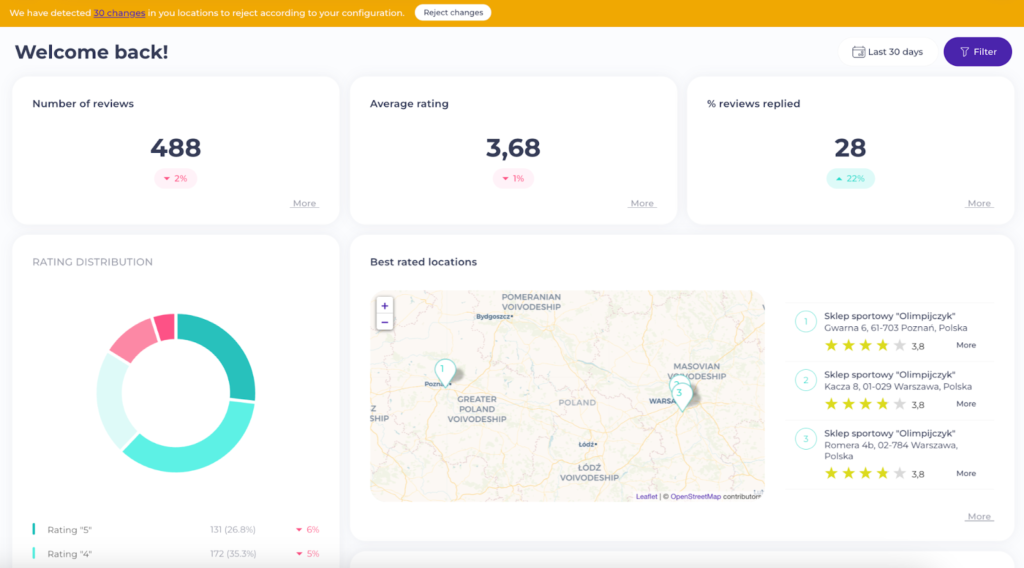
Center AI Features:
- Bulk Listings Management: With Center AI, you can quickly update contact details, opening hours, and other information across all locations simultaneously, saving time and reducing errors.
- Responding to Customer Reviews: Center AI allows you to monitor reviews from one place, respond to them faster, and analyze customer feedback, making it easier to build a positive company image.
- Publishing Posts and Photos: Center AI enables you to manage photo and post additions across multiple profiles at once, ensuring a consistent brand image on all platforms and helping to drive traffic.
- Position Tracking for Keywords: Monitor your company’s position for specific keywords, which helps assess the effectiveness of SEO efforts and adjust your strategy.
- Profile Statistics: Center AI provides data on profile views and searches, helping you better understand how customers find your business on Google Maps. It also includes data on actions taken within your profiles, such as setting driving directions, making phone calls, or visiting your website. For more insights on how to measure foot traffic data effectively and optimize your strategies, check out our detailed guide.
- Profiles’ Security: Google Business Profiles can be vulnerable to unwanted changes from competitors or other Google users. Center AI offers automatic safeguards that protect profiles from unauthorized modifications.

Take the Hassle Out of Managing Your Google Business Profiles
Streamline updates, respond to customer reviews, and track your performance—all in one place. Try Center AI and see the difference.
2. Local Marketing
Local marketing is essential, especially for businesses operating in specific regional markets. A well-executed strategy helps increase brand recognition and build lasting relationships with the local community.
When your business is seen as an active community member, you gain loyal customers who feel connected to your brand. Local businesses have an advantage in establishing direct relationships with customers, which is more challenging for large corporations.
Effective Local Marketing Strategies:
Advertising in Local Media: Local newspapers or radio advertising reaches a broad local audience. For example, a bakery could promote its fresh bread in a local newspaper.
Participation and Sponsorship of Local Events: Festivals, fairs, or concerts are great opportunities to promote your brand. Sponsoring such events increases visibility and shows that your company is engaged in community life. A sports store could sponsor a local charity run, offering discount vouchers.
Social Media Campaigns: Social media allows precise targeting of ads to people in a specific region. Local restaurants often promote their menus and offer them to residents using Facebook or Instagram.
Collaborating with Local Influencers: Local influencers can significantly strengthen your marketing strategy. Working with a trusted person in a given community attracts new customers. A beauty salon collaborating with a popular local blogger could be an example.
3. Reputation Management
Online reputation plays a crucial role in purchasing decisions. 93% of customers check online reviews before making a purchase, and 84% trust them as much as personal recommendations.
Best Practices in Reputation Management:
- Regularly Monitor Reviews on Google and Other Platforms: Constantly tracking opinions allows for quick responses and prevents the escalation of negative comments.
- Respond Quickly and Professionally to Negative Reviews: Responding to a negative review can minimize its impact and show that the company cares about its customers. For tips on crafting thoughtful and effective responses, refer to our customer review reply template. A professional approach to difficult situations builds trust and loyalty.
- Encourage Customers to Leave Positive Reviews: Positive reviews are key to improving your company’s image. Regularly asking satisfied customers for reviews can significantly increase their number and improve your average rating.
How Center AI Helps with Reputation Management:
- Automating Responses to Reviews: Center AI offers tools to automate responses to reviews, allowing for quick and consistent reactions to customer opinions. You can use ready-made response templates or utilize AI to create personalized replies.
- Monitoring and Analyzing Customer Ratings: Center AI allows real-time monitoring of your company’s reputation, analyzing customer ratings and sentiment. This enables you to respond quickly to public opinion changes and adjust your actions to maintain a positive image. The tool allows for analysis of ratings in various business areas, such as customer service quality or product range, helping to identify areas that need improvement.
- Review Booster: Reviews are crucial for the success of any business. With Review Booster, which helps gather positive reviews, you can simultaneously keep negative reviews internal for further analysis. This not only improves the company’s online image but also provides valuable insights that can help enhance customer experiences.
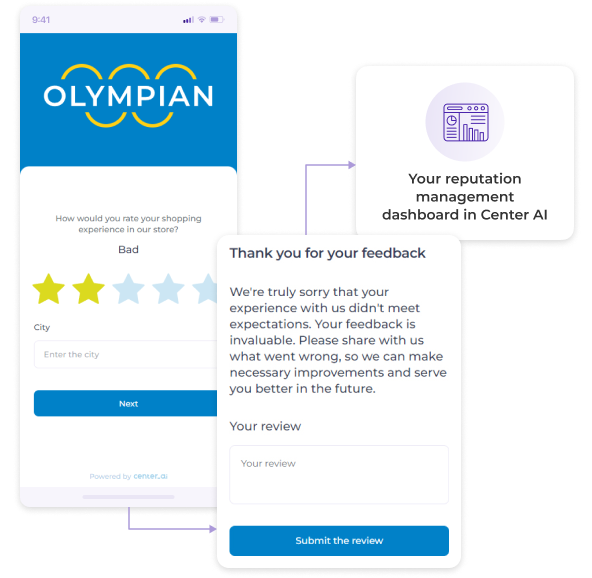
4. Promotional Campaigns
Promotions are an effective way to attract customers to stores. Well-planned discounts and offers can significantly increase traffic and improve sales, especially during seasonal sales or special events.
Types of Promotions:
- Attractive Offers and Discounts: Promotions like discounts on previous collections or special offers on new products effectively draw customers to the store. For example, clothing stores can offer a 20% discount on summer clothes in August, which not only clears out stock but also attracts customers who may make additional purchases.
- Seasonal Promotions: Periods like Black Friday, holidays, or end-of-season sales generate increased traffic as customers are more likely to visit stores searching for deals. Electronics stores could offer discounts on popular gadgets during the holiday season, increasing both traffic and sales.
Best Practices for Running Promotional Campaigns:
- Customer Segmentation and Personalization of Offers: Divide customers into groups and tailor offers to their needs. Offer exclusive promotions to loyal customers and incentives for new customers to make their first purchase.
- Using Various Communication Channels:
- Email: Great for informing regular customers about upcoming promotions.
- SMS: Effective for quickly conveying information about discounts or sales.
- Social Media: Ideal for broadly promoting offers and engaging new customers.
- Example: A shoe store can send SMS notifications about a summer shoe sale while promoting the offer on Facebook and Instagram.
- Real-Time Campaign Monitoring: Regularly monitor results to make changes to the campaign quickly. Analyze which offers attract customers and which need improvement.

5. Mobile Apps and Geolocation
Mobility plays a key role in today’s drive-to-store strategies. The rise in smartphone usage means companies must effectively reach customers on the go.
The Importance of Mobility in Drive-to-Store Strategy:
- Mobile Devices in the Shopping Process: Most consumers use phones to find local businesses. As many as 82% of smartphone users use them to search for product and service information in their vicinity.
- Mobile Apps and Geolocation Notifications: Integrating apps with geolocation systems can significantly increase store traffic. Customers can receive push notifications with offers when they are near the store. For example, Starbucks sends notifications about promotions when users are near one of its coffee shops.
Examples of Using Mobile Technologies:
- Loyalty Apps: Apps that reward visits to the store increase loyalty and traffic. For example, Subway’s app offers points for purchases redeemable for free products.
- Push Notifications: Sending notifications about promotions when a customer is near the store effectively draws them inside. Clothing stores can inform customers about sales when they pass by the store.
- Beacons: These small devices communicate with mobile apps, personalizing the shopping experience in the store. For example, an app might display special offers on electronics when a customer approaches that section.

6. Cross-promotion
Cross-promotion, or collaboration between local businesses, is an effective way to reach new customers and build valuable partnerships. This type of activity benefits both parties, allowing for mutual support and increased visibility among local communities. It is also a key component of partner marketing, a strategy where businesses join forces to expand their audience, share resources, and drive mutual growth.
Benefits of Cross-Promotion:
- Mutual Support of Local Businesses: Collaborating with other companies in the region allows you to reach new groups of customers who may not be aware of your brand. For example, a gym network can partner with local sportswear stores, offering discounts to its members, which increases traffic to both locations.
- Building Valuable Partnerships: Cross-promotion allows for long-term relationships between companies, bringing benefits such as increased customer loyalty. An example is the collaboration between Starbucks and Barnes & Noble—customers buying books could get discounts on coffee, and the café offered the latest bestsellers.
How to Conduct Effective Cross-Promotion:
- Choose the Right Business Partners: It’s crucial to find companies with a similar target audience but offering different products or services. For example, restaurants could collaborate with nearby cinemas, offering discounts on meals to customers with movie tickets. This attracts customers to both venues.
- Create Joint Promotional Offers: Partnering companies can offer discounts on complementary products or services. For example, Nike’s collaboration with a fitness app offered users discounts on purchases at Nike, increasing traffic in both sales channels.
- Promote Partners in Your Communication Channels: It’s essential to mutually promote business partners on your websites, social media, or newsletters. Local cafes could promote nearby bookstores, and in return, bookstores could offer coffee coupons with book purchases. This type of collaboration increases visibility and builds customer engagement.

7. Pop-Up Shops and Showrooms
Pop-up shops are temporary retail spaces that can effectively generate increased traffic, especially during key periods like holidays or seasonal sales. They also allow you to test new markets and locations without long-term commitments, enabling flexible responses to changing customer needs.
Using Pop-Up Shops:
- Generating Traffic: Pop-up shops can attract attention with their temporary nature and exclusivity, encouraging quick visits. For example, well-known brands often open pop-up shops during the holiday season, offering limited-edition products, drawing crowds.
- Testing New Markets: Pop-ups allow for experimenting with new locations before committing to a permanent store. This way, you can test customer interest in a region, minimizing financial risk.
Best Practices for Organizing Pop-Up Shops:
- Choose the Right Locations: It’s crucial to select high-traffic areas, such as shopping centers or popular shopping streets, with a natural flow of potential customers.
- Promote in Advance: Effective promotion of the pop-up on social media and other channels is essential to ensure the right footfall. Brands often use influencers and local media to increase awareness of the store opening.
- Create a Unique Shopping Experience: Pop-ups are a great opportunity to offer customers something special, such as personalized products, interactive zones, or exclusive offers. This makes customers remember the visit and more likely to return to the brand’s permanent stores.
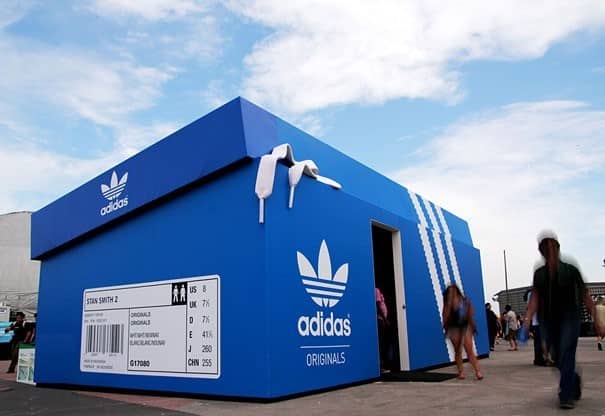
8. Implementing Loyalty Programs to Drive Foot Traffic
Loyalty programs are a powerful tool for driving in-store visits and increasing customer retention. By offering incentives and exclusive rewards, businesses can create a compelling reason for customers to visit physical locations repeatedly.
Why Loyalty Programs Matter for Brick-and-Mortar Stores
Loyalty programs go beyond just rewarding customers; they build long-term relationships, encourage repeat visits, and enhance brand loyalty. Customers who feel appreciated and receive personalized benefits are more likely to return, make additional purchases, and even recommend the store to others.
A well-designed loyalty program can:
- Increase Repeat Visits: Customers with incentives to return are more likely to visit the store multiple times.
- Boost Average Order Value: Members often spend more per visit to unlock rewards.
- Improve Customer Engagement: Personalized offers and promotions create a stronger bond between the brand and customers.
- Encourage Word-of-Mouth Marketing: Satisfied members become brand advocates, bringing in new customers.
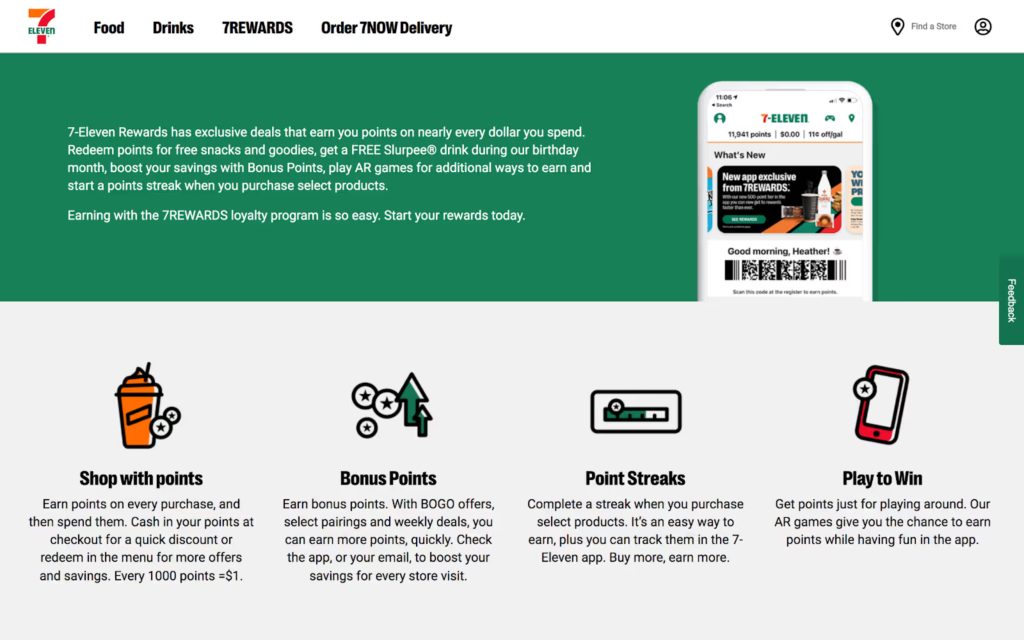
How to Optimize Your Loyalty Program for Foot Traffic
To maximize the impact of a loyalty program on physical store visits, retailers should consider these best practices:
- Link Rewards to In-Store Visits: Offer special incentives for customers who redeem rewards in-store rather than online.
- Personalize Offers: Use customer data to create targeted promotions, such as birthday rewards or location-based discounts.
- Gamify the Experience: Introduce challenges, bonus point opportunities, and exclusive events to keep customers engaged.
- Utilize Mobile Apps & Push Notifications: Alert customers to new rewards and promotions when they are near a store.
- Leverage Social Proof: Showcase testimonials and success stories of customers benefiting from the program.
For additional insights into successful loyalty programs in retail, check out our in-depth guide: Best Retail Loyalty Programs. Learn how top brands are leveraging customer engagement strategies to drive more in-store traffic and increase sales.
By implementing an effective loyalty program tailored to your audience, you can transform casual shoppers into lifelong customers and significantly enhance your drive-to-store marketing efforts.
Types of Loyalty Programs for Physical Stores
Retailers can implement various types of loyalty programs based on their business model and customer preferences. Here are some of the most effective options:
- Points-Based Loyalty Programs
Customers earn points for every purchase, which can be redeemed for discounts, free products, or exclusive rewards. This system encourages continuous spending to accumulate more points. - Tiered Loyalty Programs
Customers unlock higher-tier benefits as they spend more, motivating them to increase their purchases. - Partner Loyalty Programs
Retailers collaborate with other businesses to offer mutual benefits, driving traffic between complementary stores. - Subscription-Based Loyalty Programs
Paid membership programs provide premium benefits like exclusive discounts, early access to products, or free shipping. - Referral-Based Loyalty Programs
Customers receive rewards for referring friends and family, increasing store traffic and acquiring new customers.
9. Leverage Rich Communication Services (RCS) Marketing
RCS marketing offers a cutting-edge approach to drive foot traffic to your physical store by providing engaging, multimedia-rich messages directly to your customers’ mobile devices. Unlike traditional SMS, RCS supports images, videos, interactive buttons, and personalized content, significantly increasing customer engagement and action.
Benefits of RCS Marketing in Drive-To-Store Campaigns:
- Interactive Promotions: Utilize interactive elements like “Buy Now,” “Learn More,” or “View Location” buttons directly in your marketing messages. These actions can guide customers straight to your promotions or provide directions to your store, simplifying the customer journey and encouraging visits.
- Real-Time Store Navigation: Provide real-time location sharing and integrated maps through RCS messages, making it easier for customers to find your store and enhancing their overall shopping experience.
- Increased Engagement: RCS’s rich multimedia capabilities significantly boost customer interaction rates compared to traditional text messaging, creating memorable brand experiences.
For businesses looking to explore RCS marketing further, check out this comprehensive RCS business messaging guide for valuable insights and best practices. Additionally, if you’re ready to implement RCS into your marketing strategy, consider exploring an RCS platform to streamline your customer communications and effectively drive in-store traffic.

Monitoring and Optimizing Strategy
Monitoring results allows you to assess whether the drive-to-store strategy delivers the expected outcomes. For example, if a promotional campaign isn’t generating the expected foot traffic, quickly identifying the problem allows for corrections before the campaign fails. One of the best ways to refine your strategy is by learning from examples of omnichannel in retail, where top brands showcase how integrating online and offline experiences can significantly boost store visits and conversions.
Key Metrics to Measure:
- Foot Traffic: Tracking the number of visitors to physical locations provides insight into how marketing campaigns translate into store visits.
- Conversions: Analyzing the number of people who purchase after visiting the store helps understand how effectively the store converts visitors into customers.
- Campaign Effectiveness: Measuring return on investment (ROI) for each marketing campaign shows which actions yield the best results, such as SMS campaigns vs. social media.
Best Practices in Analysis and Optimization:
- Set Key Performance Indicators (KPIs): Every strategy should have clearly defined KPIs, such as the number of new customers, average shopping basket value, or customer return rate. For example, the goal might be to increase retail foot traffic by 20% within a month.
- Regular Reviews and Reports: Weekly or monthly result views allow for continuous monitoring of progress and making necessary adjustments. Regular reports might include metrics like the number of visitors, sales, or customer acquisition cost (CAC).
- Respond Quickly to Poor Results: If analysis shows that some actions aren’t delivering expected results, quick corrections are necessary. For example, if a social media ad campaign isn’t generating traffic, you can test another communication channel, such as an email campaign.
Sample KPIs to Track:
- Foot Traffic: Number of store visits daily, weekly, or monthly.
- Conversions: Percentage of visitors who made a purchase.
- Average Transaction Value: The average amount a customer spends per visit.
- Campaign ROI: Return on investment for individual promotional campaigns.
Constant analysis and optimization improve the effectiveness of drive-to-store strategies and provide a better understanding of customer needs and behaviors, leading to increased loyalty and sales in the long term.
Conclusion
In this article, we’ve discussed seven effective drive-to-store strategies that will help you attract more customers and drive foot traffic.
Optimizing Google Business Profiles, local marketing, reputation management, promotional campaigns, mobile technologies, cross-promotions, and pop-up shops are proven methods of strengthening physical stores’ position in the market.
With proper monitoring and analysis of results, you can continuously refine these strategies, increasing customer loyalty and maximizing sales.
Tools like Center AI allow you to manage these activities efficiently and achieve better results.
Share article:
Search Blog
Free Google Business Profile Audit
See how you rank vs. competitors, uncover how customers engage, analyze review sentiment, and identify your next best move.
Most popular posts
Join the newsletter
Receive the latest content on reputation building and boosting foot traffic in brick-and-mortar stores.





